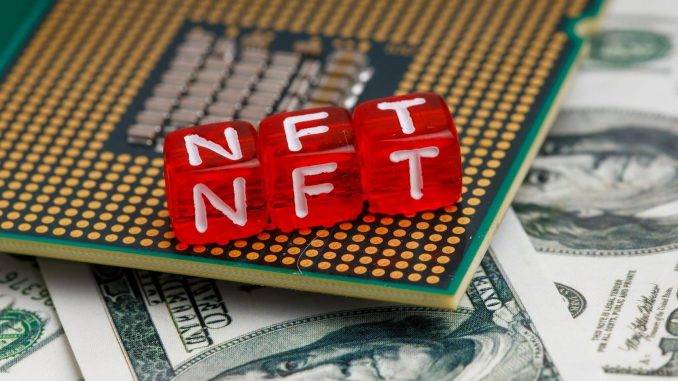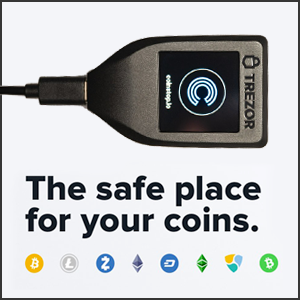
Recent years have made the term “NFT” a buzzword and one now recognized by households all over the world. A concept designed and brought to the fore in the 21st century, NFTs seemed like their growth and success were unrelenting with 60-fold growth recorded for the industry between 2018 and 2021.
By 2021, according to data analytics firm DappRadar, there were upwards of 58.6 million NFT trades, representing a staggering 21,000% increase from 2020. That number almost doubled in 2022 when trading volume rose to $23.6 billion. However, by 2023, the number was down to just $11.8 billion. That downswing caused many to question whether NFTs are being dropped in 2024. However, the truth is a little more nuanced.
What Drove the NFT Boom
NFTs were created when Kevin McCoy minted the first one on the Namecoin blockchain back in 2014. Known as “Quantum”, it would take a few years for NFTs in general to truly catch on. However, they soon did as everyone from celebrities to sports stars and political figures began trading them. The crypto boom saw new NFTs and cryptocurrencies popping up everywhere.
One of the industries to benefit the most was the iGaming industry. Specialized online casinos that accepted cryptocurrency as a payment method, such as those reviewed in this crypto casino guide, began mushrooming as a result. By being able to offer perks like anonymous gambling, a more private experience, and faster payouts, crypto casinos took off rapidly. This made it possible for NFTs to soon also be introduced to the world of online casinos and sports betting, along with many other industries.
For example, NFTs quickly became the hottest thing in the art world. To put this into context, by 2021, when the digital artist Mike Winkelman sold his NFT piece, “Everydays: The First 5000 Days” for a whopping $69 million, it instantly made his work more valuable than the likes of the latest Monet painting “Nympheas”, that had only mustered around $54 million when it sold in 2014.
In the same vein, ordinary gaming and traditional pay-to-play models were slowly being replaced by play-to-earn games where players can play video games to earn crypto rewards or retain ownership of NFT items such as digital pets and collectibles they achieve in a game. Meanwhile, concepts like token-gating are transforming big concert experiences and the entertainment industry by providing more personalized access to the stars through the use of NFTs and other tokens that fans can buy for enhanced experiences or access to special privileges.
What Exactly is an NFT?
In short, NFT stands for Non-Fungible Token and is a term that describes a type of digital asset that is verified through the use of blockchain technology. The essential trait that distinguishes them from a cryptocurrency is their non-fungibility, meaning they can’t be interchanged or traded on a one-on-one basis. This makes each one unique and incapable of being replicated, divided, or replaced by another type of asset.
It’s these innate qualities that give NFTs their value. They are governed by underlying smart contracts and must adhere to certain standards in order to be properly classified and traded as an NFT, but also to ensure they maintain their uniqueness. By being able to incorporate forms of metadata that correlate to a digital or real-world asset, they are able to be verified for things like legal proof of ownership and provenance.
The Rise of Cryptocurrencies and NFTs Together
During the period of the NFT surge between 2018 and 2021, there were also technical factors that precipitated the rise of NFTs. One of those was the fact that soaring cryptocurrency prices spurred interest and created capital for speculative investment in other digital asset classes — with NFTs becoming the darling of investors among them.
Additionally, the purchase and endorsements of NFTs by famous artists and celebrities, exclusive auction houses, high-level politicians, art galleries, and other industries that began recognizing it as a valuable form of art and collectibles, boosted their prices significantly. That trend was later bolstered by the likes of famous influencers and major cryptocurrency investors who also began heavily promoting NFTs to retail investors during this period.
All the growth in the industry, complemented by simultaneous growth in cryptocurrencies and blockchain technology as a sector, meant NFT marketplaces swiftly evolved to become more user-friendly. Together, this super industry collectively marched forward, with NFTs becoming a valuable and highly sought-after digital asset class that emerged from it.
What factors Have Influenced a Perception that NFTs are Dying in 2024
Despite all that positive sentiment, provable value, and exorbitant growth in NFTs, 2024 saw a slump in trading volumes that have caused many to speculate that it’s already run its course and become a dying asset class. There are a couple of reasons contributing to this opinion. Here are the key ones and how they have contributed to it.
Market Saturation
With the best of the NFT craze starting to wane significantly by early 2024, the NFT market had become quite heavily saturated by that point. It was littered with many unrealized projects and many others lacking the kind of originality or practical utility that gave the most valuable NFTs their fame and success.
That oversaturation has led to somewhat depressed interest in NFTs as well as lower investment from new and experienced NFT collectors. As a result, trading volumes have dropped off.
The Speculative Bubble Burst
Like many other massively lucrative crazes that have emerged from the tech world, interest in NFTs was soon old news. All the initial hype surrounding them was a result of early speculative investments that pushed the market upward.
Prices and value back then were often fueled by novelty, rather than intrinsic value. As the market matured more over the years, many speculative investors have now exited completely or cut their investments significantly, leading to a large drop in prices and interest in NFTs.
Environmental Concerns and Regulatory Challenges
NFTs, and in particular, those that use proof-of-work (PoW) blockchains like Ethereum, very often come under heavy criticism for their environmental impact. Ethereum has already made a transition to a proof-of-stake (PoS) consensus, however, reputational damage still affects how anything that comes out of its network is perceived. The problem with this concern is that it tends to drive away environmentally conscious investors from NFTs.
On the other hand, blockchain technology’s calling card as an industry has always been its ability to democratize tech processes and run on a financial system void of central authority. However, governments around the world have already begun setting regulations on cryptocurrencies and related investments and digital asset classes, including NFTs. These kinds of regulations, although aimed at addressing sincere concerns for things like fraud, corruption, money laundering, and funding of terrorism, can impede the growth and operation of NFT markets.
The Nuances That Show NFTs Aren’t Dead Yet
Many outlets have begun reporting that NFTs may be dying or dead already. Some of the numbers back this up since the market’s value has nosedived relative to its peak. Another factor that has contributed to the decline in NFT growth and trading is AI, which has definitively become the new tech darling for now, as everyone from investors to creatives scurry to leverage its capabilities and squeeze value out of it.
However, despite the many factors that show a significant drop in the NFT market, there are plenty of reasons pointing to the fact that the market isn’t quite dead at all. For one, there are plenty of large and even institutional investors who are still heavily invested in their NFT portfolios. The fact that many have clung on should be a sign that they believe the market has longevity in it yet.
On the other hand, like cryptocurrencies, the market is also maturing and leveling off. With saturation now apparent, it will take more creative and unique offerings to make headlines and draw massive investors. However, that doesn’t mean the market is inactive — quite the contrary — it still sees plenty of new NFTs being minted and a lot of trading. What has occurred is that the market has matured toward more utility-based values such as those that come from token-gating at other practical uses of NFTs.
Either way, what is clear is that NFTs are still very much alive, though not as easily tempted into exorbitant sales since the market has raised the bar for what it deems to be of true value. Just as the influencing scene now encompasses everything from truly skilled and talented content creators who have been a part of its boom from the beginning, to every newbie trying desperately to gain clout with far less of the effort, hard work, or talent that the most successful influencers have put into building their enterprises, the NFT market has grown diverse too.
Like that example, quality has also dropped, meaning investors are not as likely to part with large sums of money for tokens and collectibles they consider to be subpar or lacking in creativity. Between these and other considerations, the NFT market, like cryptocurrencies, is probably just leveling off toward stability. Rather than dying off altogether, it’s probably safe to say that we will still have NFTs for some time to come. Perhaps, other innovations like AI will provide the means to make them buzz-worthy again.


